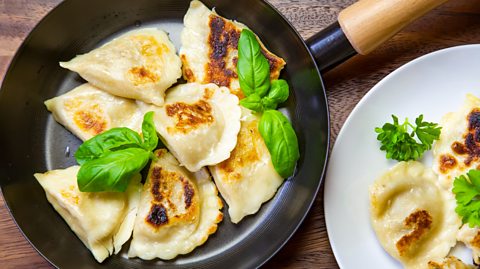What is the food you usually tuck in to first thing in the morning?
In the UK, our options include a quick round of toast, a bowl of soggy cereal, or perhaps a cooked breakfast if you have time.
Itãs not the same story at breakfast tables around the world, with different countries having their own menus for what is often described as the most important meal of the day.
ôÕÑ¿èÓ Bitesize has had a good look around larders from across the globe, to see what is served up before, and during, the morning rush.
Hagelslag: The most exciting bread ever?
We may be used to spreading butter, jam, or many different kinds of spread on our toast - but have you ever considered a liberal dusting of chocolate sprinkles?
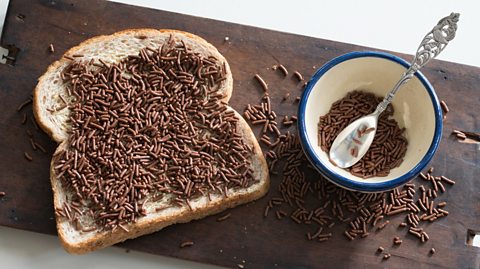
Thatãs what hagelslag is, although in the Netherlands (where they were invented), they tend to be sprinkled on bread rather than toast. The breakfast aisle in Dutch supermarkets can have up to 20 different varieties of hagelslag, with more than just chocolate flavours.
First produced in around 1919 by the Dutch manufacturer Venco, hagelslag originally tasted of the herb anise (or aniseed). Their inventor, BE Dieperink, modelled the shape of the pieces after hail - hagelslag translates into English as a hit of hail. Chocolate was introduced to the concept in 1936 by a Dutch confectionery company.
As well as being a breakfast staple in the Netherlands, hagelslag are also popular in Belgium and parts of Suriname and Indonesia. Sweet sprinkles on bread is also popular in Australia, where it is known as fairy bread, although this is more usually served up at childrenãs parties.
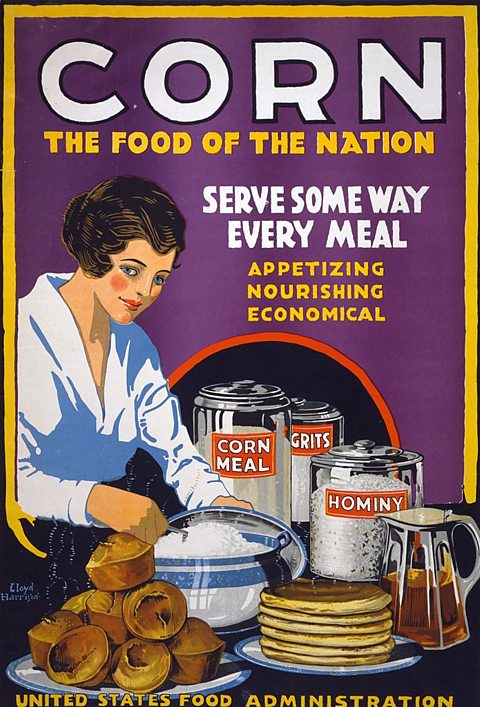
Grits: A breakfast with optional shrimp
You may have heard grits mentioned in American films. The dish, which comes from the USAãs southern states, is a porridge made from cornmeal. One reported origin is that grits were originally prepared by a Native American tribe called the Muskogee, who lived in south-eastern USA in the 16th Century. Food historian Erin Byers Murray says the dish which eventually became grits can be traced back to 8700 BC and the name comes from ãgristã, given to it by indigenous people in the state of Virginia.
The south of America is sometimes referred to as the Grits Belt because of its association with the food, and the state of Georgia named grits one of its official foods in 2002.
Combining shrimp with grits is a tradition, thought to date back to enslaved people from West Africa who worked near the coast of southern USA. They would add whatever food they could catch to their daily allowance, including shrimp. When a recipe for shrimps and grits appeared in The New York Times in 1985, it became popular in other parts of the USA as well. ôÕÑ¿èÓ Food has its own recipe.

PûÈo de queijo: Start your day with a cheese roll
Made with tapioca starch and also gluten-free, pûÈo de queijo are a traditional cheese roll snack in Brazil, at breakfast and other times of day.

It has its roots in the Portuguese colonisation of Brazil, when enslaved people had to make do with what they could find for food - similar to the people in West Africa who added shrimp to their version of grits. In this case, the manioc plant - perhaps better known as tapioca, was the source of a new type of bread. While much of the root was used to make other traditional Brazilian dishes, the tapioca starch left behind was collected up, made into balls and baked.
The pûÈo de queijo enjoyed by Brazilians every day contain cheese as well. That ingredient wasnãt an option at the time of its creation, being added after slavery came to an end, in the state of Minas Gerais, the home of Brazilãs dairy industry.
Looking for quizzes, amazing stories and fun facts?
Bitesize Topical has it all!

Deep-Fried Dough Sticks: Keeping China going in the morning
Sometimes you just want something simple and straightforward to start your day. In that case, fried dough sticks (known as quäˋy or youtiao and also crullers), popular in China and other parts of Asia may just hit the spot.

If you fry them just right, the sticks have a crispy golden texture on the outside and are fluffy on the inside. They usually need an accompaniment, and soy milk is a traditional dip for the sticks, in much the same way guacamole and tortilla chips get on so well together.
Bsissa: An African superfood that goes beyond breakfast
In some African countries, such as Tunisia, there is a powder used to prepare breakfast dishes for decades that has high nutritional value.
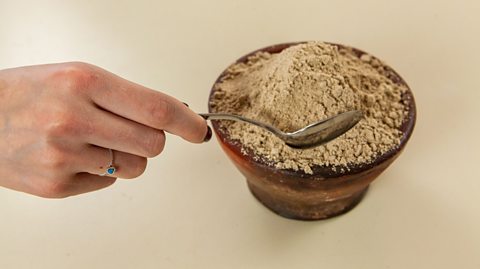
Itãs called bsissa and its ingredients include roasted wheat and barley, fennel seed, aniseed and marjoram. Once those have been ground up, other milled nuts and pulses are added, which could be chickpeas, lentils or sesame seeds. By this stage, bsissa is brimming with nutrients before being turned into a thick cream with olive oil and honey.
In more recent years, the health properties of bsissa have elevated it beyond the breakfast table (it has up to 18g of muscle-building protein per 100g) and itãs become a popular menu item at cafes and spas.
That healthy angle harks back to bsissaãs roots. It was once carried by people travelling the Maghreb, from Libya in the east of North Africa to Morocco in the west. The powder was a source of nutrition when making the tough trip across the Sahara Desert. Mixing it with water, olive oil, or fruit, made it an earlier form of the smoothie - a shake called rowina.
This article was first published in August 2022.
Digestion - how does breakfast affect your day?
ôÕÑ¿èÓ Teach

Foods we love that were invented through necessity
The treats invented when treats were pretty difficult to come by.
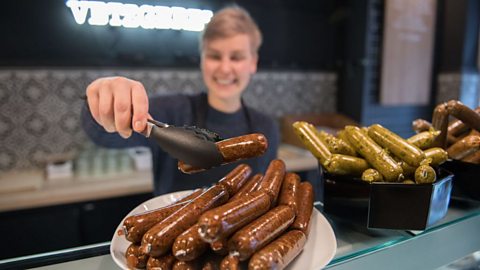
Dumplings from around the world
Dumplings are an incredibly important food in lots of cultures - here are three and their stories.
